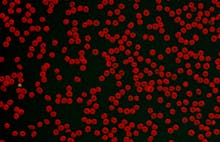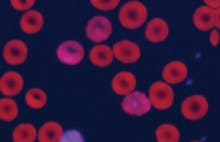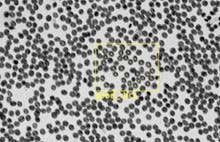Cyclic Neutropenia
Definition, Diagnosis and SymptomsWhat is cyclic neutropenia?
Cyclic neutropenia, also known as cyclic hematopoiesis or cyclic leucopenia, is a rare blood disorder that leads to recurrent episodes of abnormally low levels of neutrophils in the body.[1]
This condition occurs in 1 out of 1 million people globally.[2]
Neutrophils are a type of white blood cell present in your immune system. They are important because they fight off infection from bacteria and other organisms. If your neutrophil count is low, your body can’t combat these harmful germs adequately. As the name implies, cyclic neutropenia occurs in cycles.
You may be wondering why. It’s because your bone marrow stem cells produce cells at fluctuating rates (cyclic fluctuations).[3]
Another interesting fact about cyclic neutropenia is that an individual’s cycles may look different from another’s. People with a longer neutropenic period will typically have more frequent bacterial infections.[3:1] However, a common characteristic sign of cyclic neutropenia is regular 21-day cyclic fluctuations in the number of blood neutrophils, monocytes, eosinophils, lymphocytes, platelets, and reticulocytes.
What causes cyclic neutropenia?
Cyclic neutropenia can be inherited (congenital) or acquired.
When cyclic neutropenia is inherited, the transmission is male-to-male, also known as autosomal dominant inheritance.
Inherited cyclic neutropenia is due to mutations in the ELANE gene.[2:1] This gene is important for making a protein called neutrophil elastase, which is typically found in neutrophils.
When a person’s ELANE gene is altered, it creates an abnormal neutrophil elastase protein. Unlike the normal form of the protein, this mutated form has a shorter lifespan that causes neutrophils to die early.
What are the symptoms of cyclic neutropenia?
People who experience cyclic neutropenia are more likely to get bacterial infections of the skin, digestive system (gut), and respiratory system.
If you are experiencing the following symptoms, you should ask your doctor whether you have cyclic neutropenia[1:1]:
- Mouth sores or ulcers (aphthae and stomatitis). Bacterial infections can cause mouth sores and ulcers. When you have low amounts of neutrophils, you are more susceptible to bacterial infection, which may cause sores in the mucous membrane of your mouth.
- Inflammation of the throat (pharyngitis). A low neutrophil count decreases the body’s ability to fight pathogens that enter the throat. This can result in a bacterial infection of the pharyngeal cavity.
- Inflammation and degeneration of the tissues around the teeth (periodontal disease). When your neutrophil counts are insufficient, your body may not be able to combat harmful bacteria that get into your mouth. Bacterial infection in your mouth can cause inflammation and degeneration of the tissues around your teeth, which may also lead to loss of teeth.
- Fever. When the walls of your gut are infected or inflamed, they can become weakened. This allows normal gut bacteria to leak into the blood. Bloodstream infection during neutropenia is called neutropenic sepsis. This infection causes fever. The Infectious Diseases Society of America defines fever in neutropenic patients as a single oral temperature of ≥38.3°C (101°F) or a temperature of ≥38.0°C (100.°F) sustained over a one-hour period.[4]
- A general feeling of ill health (malaise). When you are dealing with several infections, you may feel unwell.
- Loss of appetite. Infections in your mouth, teeth, or throat can make eating painful. You may lose appetite as a result.
How is cyclic neutropenia diagnosed?
To diagnose cyclic neutropenia, your doctor will first look at your medical history.
Next, your doctor will perform a thorough clinical evaluation that includes blood work.
Your doctor will check your neutrophil count two to three times a week for six weeks.
If your blood work consistently shows that you have less than 200/microL of neutrophils, then your doctor may suspect that you have cyclic neutropenia.
Finally, to confirm the diagnosis of cyclic neutropenia, your doctor will order genetic testing. This will check for mutations in your ELANE gene.
How is cyclic neutropenia treated?
Your doctor may combine multiple treatments to address cyclic neutropenia.
Do not treat cyclic neutropenia on your own. Ask your doctor what treatments are right for you.
The treatments may include improving your symptoms and increasing your neutrophil count.
Improving your symptoms
Physicians treat cyclic neutropenia by alleviating the symptoms. Your doctor may prescribe medicines for fever and infections, including an antibiotic.
Increasing your neutrophil count with G-CSF
To get your neutrophil count to normal levels, your doctor may prescribe granulocyte colony-stimulating factor (G-CSF), also known as Neupogen.[5]
Neupogen helps with getting your neutrophil count to a normal range. It can also reduce any symptoms of the condition.
Ask your doctor if Neupogen is right for you.
Sources
- Cyclic Neutropenia. NORD (National Organization for Rare Disorders). Accessed June 23, 2021. https://rarediseases.org/rare-diseases/cyclic-neutropenia/ ↩︎
- Cyclic neutropenia: MedlinePlus Genetics. Accessed June 23, 2021. https://medlineplus.gov/genetics/condition/cyclic-neutropenia/ ↩︎
- Types of Neutropenia. National Neutropenia Network. Accessed June 23, 2021. https://neutropenianet.org/what-is-neutropenia/types-of-neutropenia/ ↩︎
- Freifeld AG, Bow EJ, Sepkowitz KA, et al. Clinical practice guideline for the use of antimicrobial agents in neutropenic patients with cancer: 2010 update by the infectious diseases society of america. Clin Infect Dis Off Publ Infect Dis Soc Am. 2011;52(4):e56-93. doi:10.1093/cid/cir073 ↩︎
- Cyclic neutropenia | Genetic and Rare Diseases Information Center (GARD) – an NCATS Program. Accessed June 23, 2021. https://rarediseases.info.nih.gov/diseases/6229/cyclic-neutropenia ↩︎
Disclaimer: The content of this knowledge post intends to provide general information related to topics that are relevant to blood diagnostics and may not be used in relation to the operation of Sight OLO. For detailed information on the diagnostic parameters and specifications of Sight OLO, please refer to the official Operator's Manual.


